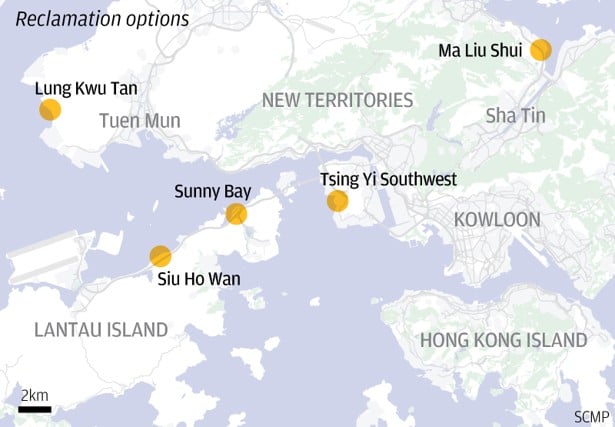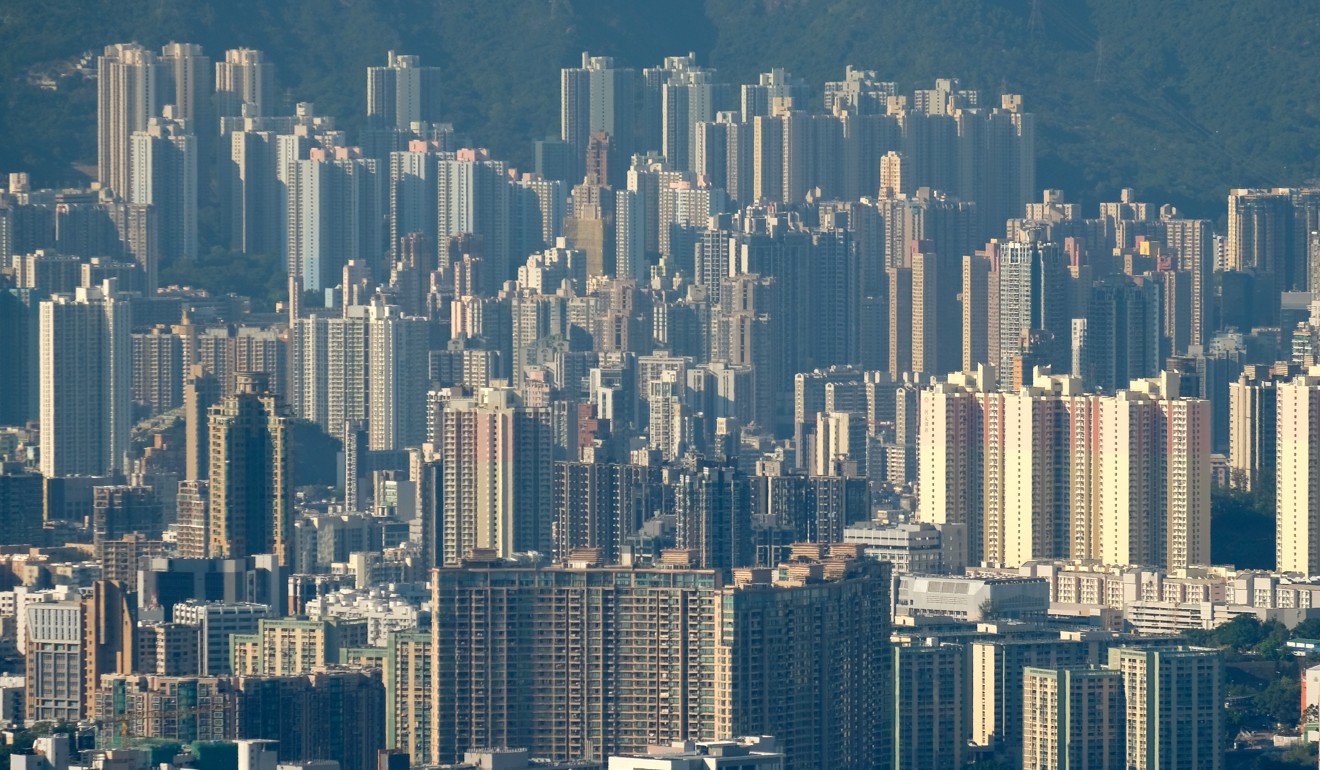
Five reclamation sites identified by Hong Kong leader are ‘important land supply option’ for city
Chief Executive Carrie Lam says her vocal support for reclamation is a ‘candid’ response to public concerns about the land shortage
Hong Kong’s leader on Tuesday fended off suggestions she had prematurely waded into the debate on land supply by signalling a preference for reclamation before the end of an ongoing public consultation exercise.
The nearshore sites are at Lung Kwu Tan in Tuen Mun, Ma Liu Shui in Sha Tin, Siu Ho Wan and Sunny Bay on Lantau Island, and Tsing Yi Southwest.
They were originally mapped out in a separate government public consultation exercise as far back as 2011 when Lam was development secretary, but were highlighted again on Tuesday by the chief executive, who said it was the government’s responsibility to study the idea.

But reclamation is opposed by environmental groups, who fear construction in the sea would threaten marine species.
The intervention by top officials has raised concerns the current consultation process could be swayed, with public opinion being collected until September.
Property transactions down to trickle after Hong Kong officials tackle housing crisis
However, Lam said her vocal support for reclamation amounted to a “candid” response to public concerns about the city’s land shortage.
“Creating land by reclamation … outside Victoria Harbour … is one of the important land supply options,” she said, and the city’s development had always relied on it.
Officials are also considering developing artificial islands in waters between Lantau and Hong Kong Island. Besides this idea and the five locations, it was unlikely other reclamation sites would be found outside Victoria Harbour, Lam added.
The recommendations have been listed in documents produced by the government-appointed Task Force on Land Supply, which is gathering public views on options to free up land in Hong Kong via a consultation exercise that ends in late September.
Reclamation at the five sites would be unlikely to affect marine routes or “sensitive habitats”, Lam said on Tuesday.
The city’s top official also said it was the government’s responsibility to study and recommend where to conduct reclamation. But she would “respect” the task force’s findings.

The chief executive rejected accusations she was interfering with the body’s work by stepping into the debate before it delivered its findings on the public consultation.
“I have made it known to the [task force] chairman that they may wish to find a way to reflect the community’s views to [officials] so that I can be in a position to make a more definitive response in the coming policy address,” Lam said.
She is due to deliver her second annual policy address in October.
“How can society’s discussion be swayed by the chief executive stating her own view?” Lam added.
City’s plan to ease housing crisis will ‘worsen car parking crunch’ in Sham Shui Po
Stanley Wong Yuen-fai, chairman of the task force, said Lam’s apparent preference for reclamation would not affect the impartiality of the consultation.
“Just as you and I have different opinions on land supply, the chief executive is also entitled to her own opinion,” he said.
The panel would reflect public views truthfully in its final report to Lam, he said, even if the results might not correspond with her preferences.
It would be impossible for the task force to present a full picture of public opinion before the policy address, so it would tell Lam in advance of the options that had generated overwhelming support or opposition, Wong said.
Secretary for Development Michael Wong Wai-lun said the government could continue with a study into reclamation in parallel with the public consultation.
“Such studies will not bring irreversible changes,” he said.
Officials could apply for funding from the city’s legislature for a planning and engineering feasibility study in the next legislative year, he added.
The development chief said the task force could give the government some “broad direction” and “preliminary findings” ahead of the release of a full report on the public engagement exercise due in late December.
In Hong Kong, nano flats boom spurs big ideas for tiny spaces
However, Liberal Party honorary chairman James Tien Pei-chun cast doubt on housing measures recently unveiled by Lam and her intention to resolve the city’s land woes via reclamation.
“It would take a long time with reclamation,” Tien told a radio programme on Tuesday.
It is misleading to present it as if it can solve our housing problems immediately
Lam’s decision to build public housing on several pieces of land in Kai Tak and on nearby Anderson Road would drive up property prices in the private market, he said.
Chan Kim-ching, of land concern group Liber Research Community, also voiced scepticism, saying the chief executive seemed to have “tied reclamation to solving people’s living problems”.
“Reclamation takes 10 to 20 years to yield land. It’s too long term,” he said. “It is misleading to present it as if it can solve our housing problems immediately.”
He believed the government already had enough land to raise the proportion of public-sector housing from 60 per cent to 70 per cent, including vast stretches of damaged farmland in the New Territories, and brownfield sites occupied by businesses that used space inefficiently and generated pollution.
Carrie Lam reflects on pressing issues of property prices and land supply
“The public should by no means think reclamation is the only way for the government to increase the proportion of public-sector housing,” Chan said.
Meanwhile, Lam said the government had no plans to tackle the “complicated” task of splitting in two the Transport and Housing Bureau.
“There is no plan or timeline because we are facing a lot of urgent work, and I don’t want to be distracted by the restructuring.”
On Monday, Frank Chan said he would prefer to take the housing portfolio if the bureau were split.
Additional reporting by Shirley Zhao


